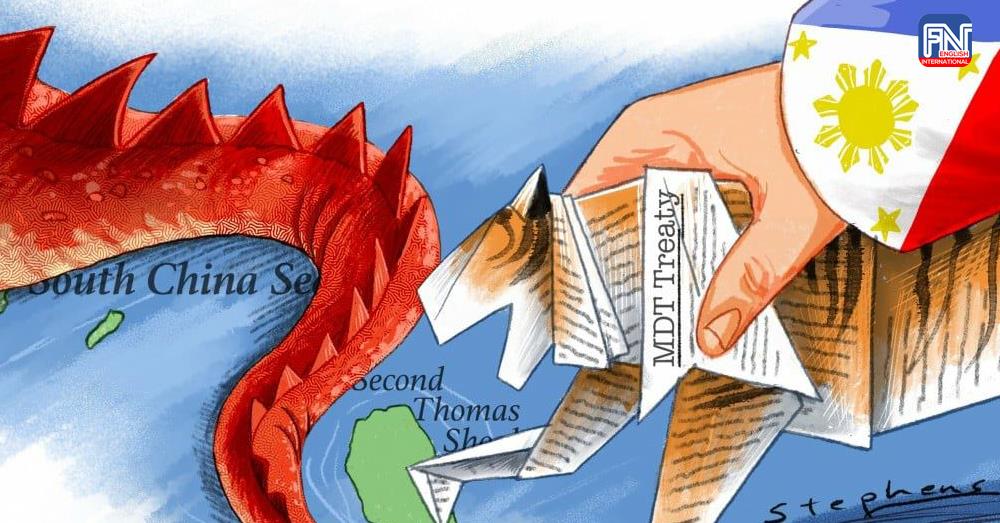Phnom Penh (FN), Oct. 31 – The South China Sea, a strategic maritime region rich in resources, has been a longstanding arena of conflict between claimant states, including the Philippines, China, Viet Nam, Malaysia, and Brunei. The Philippines' engagement in the dispute has evolved over the years, especially following the 2016 arbitral ruling, which rejected China's expansive claims based on the "nine-dash line." As China continues to assert dominance, the Philippines has adopted a range of policy responses to navigate the evolving security landscape and safeguard its sovereignty.
This paper aims to critically analyze the Philippines' policy proposals and responses to the South China Sea conflict. It examines the legal, diplomatic, and military approaches the country has pursued and evaluates the challenges and prospects for peace in the region.
The South China Sea has been a focal point of conflict for decades, with overlapping claims from various nations rooted in different interpretations of history, geography, and international law. The Philippines’ claim centers on the Kalayaan Island Group (KIG) and the Scarborough Shoal, based on proximity and historical rights. In contrast, China's claims extend to nearly 85% of the SCS, supported by its controversial nine-dash line. Tensions escalated in the early 21st century as China ramped up its militarization and land reclamation activities in disputed areas. The 2016 ruling by the Permanent Court of Arbitration in The Hague marked a significant turning point in the dispute. The Tribunal ruled that China’s historical claims had no legal basis, reaffirming the Philippines' sovereign rights over the areas within its exclusive economic zone (EEZ). However, China refused to recognize the ruling, which has since left the region in a state of heightened tension.
Policy Proposals by the Philippines
• Legal Approach: The 2016 Arbitral Tribunal Case
One of the most significant policy responses by the Philippines was its decision to challenge China's claims at the international level. In 2013, the Philippines filed a case under the United Nations Convention on the Law of the Sea (UNCLOS), seeking clarification of its maritime rights. The 2016 ruling was seen as a diplomatic and legal victory for the Philippines, though China’s non-compliance has limited its practical impact.
• Diplomatic Engagement: Bilateral and Multilateral Approaches
The diplomatic approach taken by the Philippines has evolved over time. Under President Benigno Aquino III, the country pursued a more assertive stance, aligning itself with the United States and other Western powers to counter China's advances. However, President Rodrigo Duterte shifted the Philippines' foreign policy toward a more conciliatory approach, prioritizing economic cooperation with China while setting aside the arbitral ruling. Despite criticism, this pragmatic stance enabled the Philippines to secure Chinese investments, although concerns over sovereignty and security have persisted.
• Multilateralism: Leveraging ASEAN and International Partnerships
The Philippines has been a vocal proponent of multilateral solutions through ASEAN, advocating for a Code of Conduct (COC) in the South China Sea. While ASEAN remains divided over how to manage the dispute, the Philippines has called for unity among member states to ensure regional stability and collective security. The country has also strengthened its ties with external partners like the United States, Japan, Australia, and the European Union, recognizing their role in maintaining a balance of power in the region.
• Military Modernization and Defense Strategy
In response to China's assertiveness, the Philippines has undertaken significant efforts to modernize its defense capabilities, focusing on enhancing its naval and air forces.
The Revised Armed Forces of the Philippines Modernization Act, passed in 2012, allocated substantial resources to upgrading military hardware and strengthening maritime security. However, budget constraints have slowed progress, leaving the country vulnerable to external threats. The Philippines has also increased its defense cooperation with the United States through the Enhanced Defense Cooperation Agreement (EDCA), allowing for the rotational presence of US forces in the country.
Response Measures and Strategic Shifts
• Realpolitik and Economic Diplomacy
The Duterte administration’s pivot to China was largely motivated by economic considerations. By setting aside the territorial dispute, the Philippines sought to secure infrastructure investments under China's Belt and Road Initiative (BRI) and its own "Build, Build, Build" program. This approach, however, drew criticism for potentially compromising Philippine sovereignty in exchange for economic benefits. In 2020, Duterte reiterated that the Philippines could not afford to go to war with China, emphasizing the importance of maintaining economic ties.
• Post-2016 Shifts: Reclaiming Sovereignty
Despite initial efforts to downplay the territorial dispute, the Philippines has gradually adopted a more assertive stance in recent years. In 2021, the Philippine government lodged multiple diplomatic protests against China following incidents of harassment of Filipino fishermen by Chinese vessels. The election of President Ferdinand Marcos Jr. in 2022 signaled a potential recalibration of foreign policy, with a renewed emphasis on asserting the Philippines' sovereignty while maintaining pragmatic economic ties with China.
• Coast Guard Diplomacy and Maritime Law Enforcement
The Philippines has increasingly turned to its Coast Guard to assert its claims in disputed waters, deploying civilian maritime assets to patrol contested areas. This "white-hulled" strategy, relying on non-military vessels, has allowed the Philippines to avoid direct military confrontation with China while still signaling its presence. International support, particularly from Japan and the U.S., has bolstered these efforts, with capacity-building programs enhancing the Philippines' maritime law enforcement capabilities.
The Role of External Powers
The Philippines' ability to navigate the South China Sea dispute is closely tied to its alliances and partnerships with external powers. The United States, under its Mutual Defense Treaty (MDT) with the Philippines, remains a critical security partner, offering both military aid and strategic deterrence against Chinese aggression. Japan, too, has played an active role in supporting the Philippines' maritime security through the provision of patrol vessels and coast guard training programs.
Challenges and Future Outlook
• Enforcing the 2016 Arbitral Ruling
One of the major challenges for the Philippines remains the enforcement of the 2016 ruling. With China’s continued refusal to acknowledge the decision, the Philippines has struggled to convert its legal victory into practical gains. The international community’s role in supporting the Philippines’ claims, particularly through diplomatic pressure on China, will be critical in shaping the future trajectory of the dispute.
• Balancing Economic and Security Interests
As the South China Sea dispute continues to evolve, future Philippine administrations will face the challenge of balancing economic ties with China against the need to defend national sovereignty. While China remains a key trading partner, the Philippines must carefully navigate the security dynamics in the region, maintaining strong ties with its traditional allies, including the United States, and participating in multilateral security frameworks like the Quad.
• ASEAN Unity and Regional Stability
ASEAN’s role in the South China Sea dispute is another key consideration for the Philippines. While the regional organization has provided a platform for dialogue, its consensus-driven decision-making process has often been criticized for being ineffective in addressing major security issues. The Philippines will need to continue advocating for a binding Code of Conduct (COC) in the South China Sea, while also working to ensure that ASEAN remains a credible actor in regional security matters.
The Philippines' policy responses to the South China Sea dispute have evolved from legal recourse to diplomatic engagement and military modernization. While the 2016 Arbitral Tribunal ruling was a significant legal victory, its enforcement remains elusive due to China's intransigence. The Philippines' ability to navigate the complex geopolitical environment of the South China Sea will depend on its ability to balance economic cooperation with China and security partnerships with external powers. Regional multilateralism, particularly through ASEAN, will continue to play a critical role in shaping the future of the dispute, with the Philippines advocating for a peaceful and rules-based order in the region.
=FRESH NEWS





